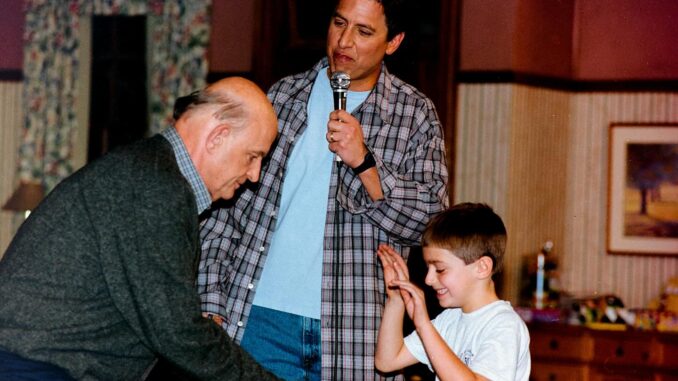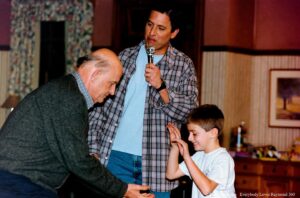
The history of Classic TV sitcoms is filled with meddling mothers and mother-in-laws, but all of them need to take a step back and nod their heads in respect to Everybody Loves Raymond’s Marie Barone, brought to masterful life by the late Doris Roberts. Throughout the show’s 1996 to 2005 run, this pint-sized lady packed a lot of power in her bark that caused everyone else to fear getting on her bad side. At the same time, she provided innumerable laughs for the audience.

Doris recognized how important Marie was to the show’s scripts, because, as she describes it, she was the middle of the wheel: more or less everything came back to her. “How I treat my son, how I treat my daughter-in-law, how I treat the other brother who feels that I don’t love him as much as this one, how I treat Peter Boyle … all of that goes back to the mother. If you take her out of it, what have you got? You have a husband trying to get his wife to give him more sex. You have a brother who’s angry and feels major sibling rivalry. This was much more than that.”
She was born Doris May Green (but would take her stepfather’s last name of Roberts) on November 4, 1925 in St. Louis, Missouri to Russian-Jewish immigrant parents. When her father deserted the family, she was raised by her mother and grandparents in the Bronx, New York. As she made clear, the experience of her father leaving definitely had an impact on her. “For years, I thought it was my fault,” she told The Sacramento Bee in 1979. “All little kids think divorce or desertion has to do with them. It took me years to let go of that; years not to expect any man I loved to ‘take a walk.’”

As Doris remembers it, her first taste of “show business” began when she was four or five. “I had one line in a play in kindergarten,” she reflected to The Sela Enterprise, “in which I said, ‘I am Patrick Potato and this is my cousin, Mrs. Tomato.’ There was laughter in the room and I loved the sound of that. It made me feel very important and that’s what I wanted to do from that moment on.” And she refused to allow a debacle the following year to dissuade her: “The first thing I did was when I was five. I auditioned for the Hearn’s Amateur Hour in New York. I sang ‘Winter Wonderland’ with a lisp. I got the bell, the hook and the gong. I was awful, but I kept at it.”
Marrying Michael E. Cannata in 1956, the two of them lived in New York as she persistently tried to get work. “In the late ‘50s and early ‘60s,” she recalled in 1979, “I couldn’t get arrested on or off Broadway. So I made work for myself. From midnight until 3 a.m., I studied at the Actor’s Studio. Why at that hour? Because I couldn’t get my then-husband to babysit until then. And I needed the work for my sense of self. Even then, it was hard to keep believing in my talent when I wasn’t getting paid for the work I did. Still, what I learned at the Studio was priceless.”

And the work did come. Slowly. In the early 1950s, she appeared on several television anthology series, including Starlight Theatre (1951), Studio One in Hollywood and Suspense (both 1952) and Look Up and Live (1954). Doris also managed parts on Broadway in The Time of Your Life and The Desk Set (both 1955). She kept pushing from there at the same time losing the battle to keep her marriage together, the two of them splitting up in 1962.
Hbo/Worldwide Pants Inc/Kobal/Shutterstock
“I was terrified to be alone,” she admitted to The Sacramento Bee. “Yet I knew I had to do it; I had to make a commitment to my life. To me. I dreaded it. In those days, women were taught not only that they couldn’t, but that they shouldn’t be independent. A man, they said, doesn’t want a woman who is too st
